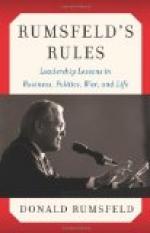The two Boer Republics are well supplied with money, arms, and ammunition, and I believe have collected large stores of supplies. Their armies consist of their burghers, with a small nucleus of professional artillery, officers, and men. The total number of burghers of both States is about fifty thousand, and that number is swollen by the addition of non-British Uitlanders who have been induced to take arms by the offer of burghership. The two States are bound by treaty to stand or fall together, and the treaty gives the Commander-in-Chief of both armies to the Transvaal Commander-in-Chief, who is however, bound to consult his subordinate colleague of the Orange Free State. The whole of the fifty thousand burghers cannot take the field. Some must remain to watch the native population, which far outnumbers the burghers and is not well affected. Some must be kept to watch the Basutos, who are anxious to raid the Free State, and there will be deductions for sick and absentees as well as for the necessary duties of civil administration. The forts of Pretoria, Johannesburg, and Bloemfontein require permanent garrisons. In the absence of the accurate data obtainable in the case of an army regularly organised into tactical and administrative units, the most various estimates are current of the force that the two States can put into the field as a mobile army available for attack as well as for defence. I think thirty-five thousand men a safer estimate than twenty-five thousand. The Boers are fighting for their political existence, which to their minds is identical with their monopoly of political rights, and therefore their States will and must exert themselves to the uttermost. This view is confirmed by the action of the British military authorities, who estimate the British force necessary to disarm the Boer States at over seventy thousand men, a number which would seem disproportionate to a Boer field force of only twenty-five thousand. The British forces now in South Africa are in two separate groups. In Natal Sir George White has some ten thousand regular troops and two thousand volunteers, the regulars being eight or nine infantry battalions, four regiments of cavalry, six field batteries, and a mounted battery. He appears to have no horse artillery. In the Cape Colony there are seven British battalions and, either landed or on passage, three field batteries. A part of this force is scattered in small garrisons of half a battalion each at points on the railways leading to the Free State—Burghersdrop, Naauwpoort, and Kimberley. At Mafeking Colonel Baden-Powell has raised a local force and has fortified the place as well as its resources permit. A force of Rhodesian volunteers is moving from Buluwayo towards Tuli, on the northern border of the Transvaal. There are volunteer corps in the Cape Colony with a total of some seven thousand men, but it is not clear whether the Schreiner Ministry, whose sympathies with the Boers are undisguised, has not prevented the effective arming of these corps.




